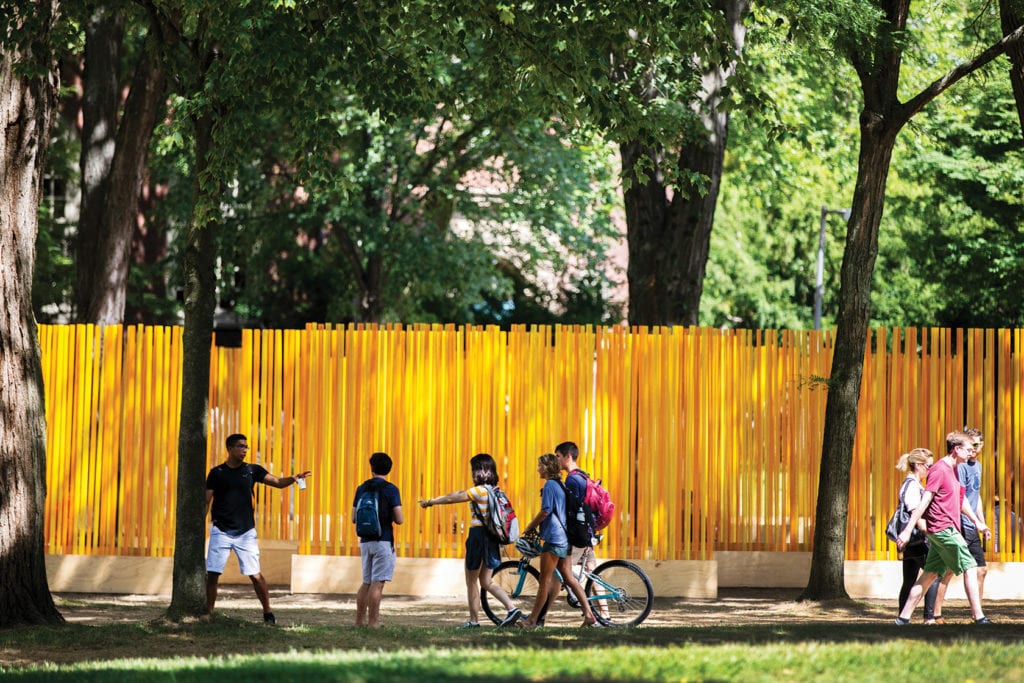Hearts & minds on fire
Teresita Fernández sculpture sets Harvard Yard aflame

Renowned contemporary artist Teresita Fernández has set Harvard Yard ablaze with her public sculpture “Autumn (…Nothing Personal).” On view through Oct. 1, the vivid grouping of bright orange and yellow tubes was inspired by James Baldwin’s essay “Nothing Personal.” Fernández hopes it will become a platform for discussion and performance.
Baldwin’s essay, published in 1964 during the civil rights movement, critiques American society for being constantly divided and violent. Despite his negative allegations, the essay ends hopefully. Fernández says, “It is Baldwin’s essay that inspired my use of the vulnerable light of autumn as a metaphor for a nation still struggling so desperately with the same issues Baldwin so eloquently exposes.”

The public, students and staff are encouraged to use the space created by Teresita Fernández’s “Autumn (…Nothing Personal)” in Harvard Yard. Photo: Stephanie Mitchell
She chose the yellow and orange colors to blend in with the autumn foliage for which New England is so well known. In that way the installation will be camouflaged on campus, just as many of the underlying societal problems Baldwin discusses are woven into our everyday fabric. The effect of “Autumn (…Nothing Personal)” changes throughout the day depending on the light around it. In the daylight it exudes a calm radiance, at night it blazes like a bonfire in the middle of the yard.
Democratizing art
The project began in January 2017, when Fernández taught an arts intensive at Harvard called “Imagination, Narrative, Democracy: Public Art in Practice.” During the class, she engaged the students in discussions about what democracy visualized in public art would look like and took the temperature of the campus to better understand its culture.
Fernández was not given the location of Harvard Yard for the project, she requested it specifically. “Place, land, real estate, is always also about power, ownership, agency and control,” says Fernández. “This is a piece about visibility, and I wanted to site it precisely at the physical coordinates of Harvard Yard — in many ways the literal site of so much power and visibility and validation.” The location also takes on an interesting connotation given the criticism the institution still receives about diversity.

The public, students and staff are encouraged to use the space created by Teresita Fernández’s “Autumn (…Nothing Personal)” in Harvard Yard. Photo: Stephanie Mitchell
The installation alone isn’t the full artwork. It won’t be complete until it’s utilized by the world around it, Fernández says. “The entire project has always been presented as an opportunity for individual students, departments and organizations, both on and off campus, to program, perform, debate and to have a sort of exposed, public reading of Baldwin’s moving essay that prompts a sense of public intimacy.”






